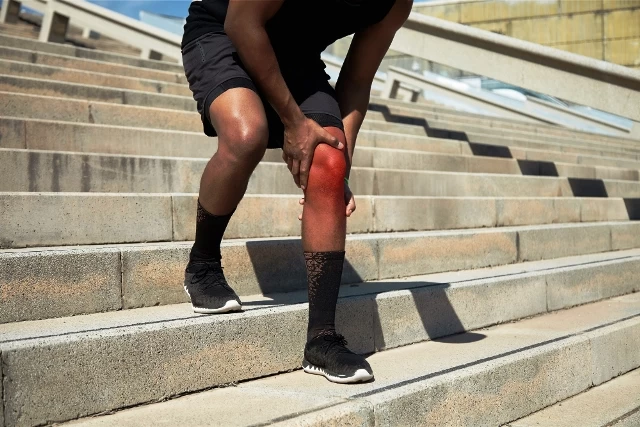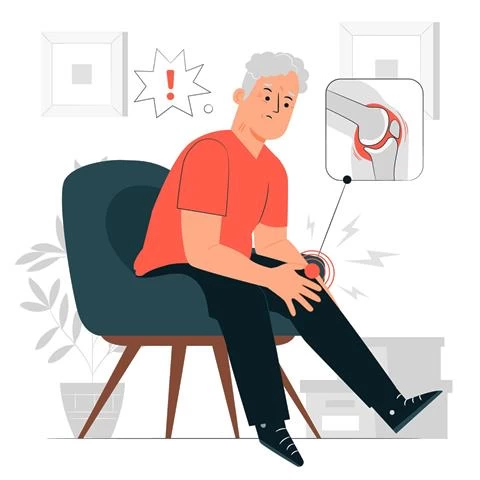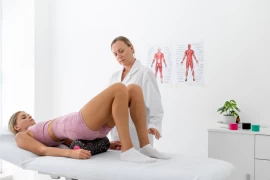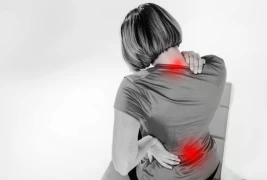
Is Surgery the Only Solution for Knee Pain?
- Is Surgery the Only Solution for Knee Pain?
- What are the Causes of Knee Pain?
- How is Knee Pain Diagnosed?
- What are the Recommendations to Prevent Knee Pain?
- What are the Treatment Options for Knee Pain?
Knee pain is a common health problem that affects a significant portion of the population. Especially in regions with high precipitation averages like Samsun and the Black Sea Region, the prevalence of knee pain increases. As Physical Medicine and Rehabilitation specialist doctors, we aim to understand the origins of these pains and offer effective treatment methods. In this article, I will explain the common causes of knee pain, diagnostic methods, and treatment options. Together, we will find the answer to the question in the title.
What are the Causes of Knee Pain?
Knee pain can be caused by various factors, including:
- Trauma and Injuries: Blows, falls, or sports injuries to the knee are common causes of knee pain. Traumatic conditions such as meniscus tears, ligament strains, dislocations, or bone fractures can lead to pain.
- Osteoarthritis: Osteoarthritis, which is associated with the aging process, can cause the cartilage tissue in the knee joint to wear down and result in pain.
- Rheumatoid Arthritis: Autoimmune diseases like rheumatoid arthritis can cause inflammation in the knee joints, leading to pain and swelling.
- Tendinitis: Inflammation and strain in the tendons around the knee can cause pain.
- Bursitis: Inflammation of the bursae (fluid-filled sacs) around the knee can lead to knee pain and swelling.
- Meniscus Tears: Tears in the meniscus structure of the knee joint can occur over the years due to microtraumas or sudden wrong movements.
- Muscle Weakness or Imbalance: Imbalance or weakness in the muscles around the knee can lead to inadequate joint support and cause pain.
How is Knee Pain Diagnosed?
Accurate diagnosis of knee pain is essential for effective treatment.
- Patient History and Examination: Physical Therapy Doctors take a detailed patient history and perform a physical examination to evaluate the patient's symptoms, the duration, and severity of the pain. Differential diagnosis is made with specific tests performed during the physical examination.
- Imaging Tests: Imaging methods such as X-ray, Magnetic Resonance Imaging (MRI), or ultrasound can help detect the knee joint's structure and possible lesions. In recent years, musculoskeletal ultrasound has gained significant importance in making a diagnosis.
- Blood Tests: In some cases, blood tests may be conducted to determine the presence of an inflammatory condition or autoimmune diseases like rheumatoid arthritis.
- Joint Fluid Analysis: The examination of the knee joint fluid may be necessary to evaluate inflammation in the knee.

What are the Recommendations to Prevent Knee Pain?
To prevent or alleviate knee pain, the following measures can be taken:
- Using proper equipment and technique while exercising
- Avoiding excessively strenuous movements and taking regular rest
- Warming up and stretching the knees, especially before and after sports activities
- Maintaining a healthy weight can reduce the load on the knees
- Wearing appropriate shoes to support the joints
What are the Treatment Options for Knee Pain?
The treatment of knee pain varies depending on the underlying cause, but generally involves the following methods:
- Medication: Pain relievers, anti-inflammatory drugs, or corticosteroid injections may be prescribed to alleviate pain and reduce inflammation.
- Physical Therapy: Exercise programs and physical therapy can be applied to strengthen the muscles around the knee, improve flexibility, and reduce pain.
- Knee Brace or Bandage: Special knee braces or bandages can be used to provide knee stabilization.
- Injection Therapies: Hyaluronic acid injections can be used to lubricate and increase the mobility of the knee joint. PRP, Stem cell applications can be highly effective methods. Prolotherapy, neural therapy, pain mesotherapy are strong treatment options in our hands.
- Surgical Intervention: In some cases, surgical intervention may be necessary for traumatic injuries or severe cartilage damage.
In conclusion, knee pain is a common condition that significantly affects the quality of life. Physical Medicine and Rehabilitation specialist doctors evaluate the patient's symptoms and provide appropriate treatment options. Early diagnosis and effective treatment can help manage knee pain. While surgical intervention may be required in cases of knee injuries resulting from trauma or severe cartilage damage, knee pain can generally be treated non-surgically.
Stay healthy...






